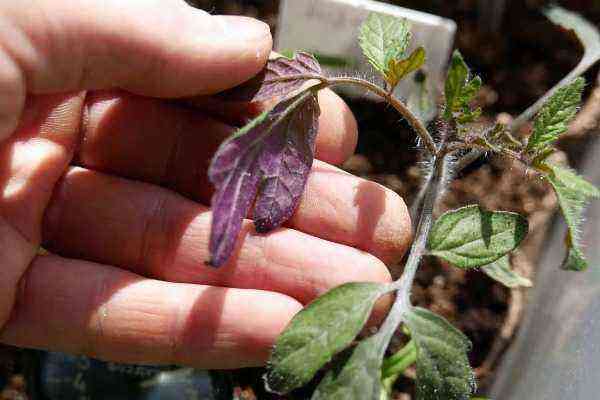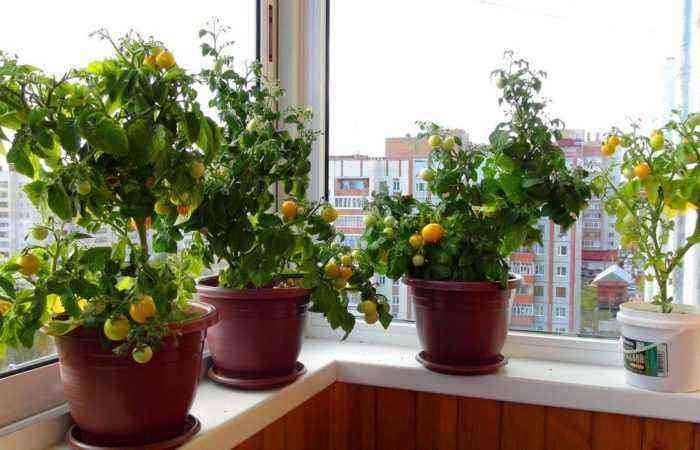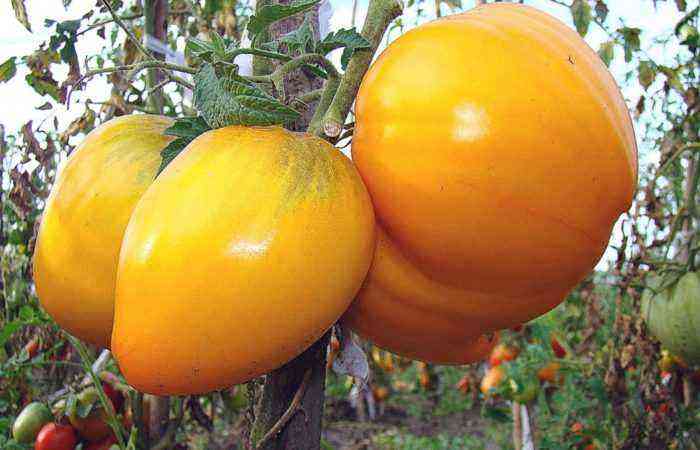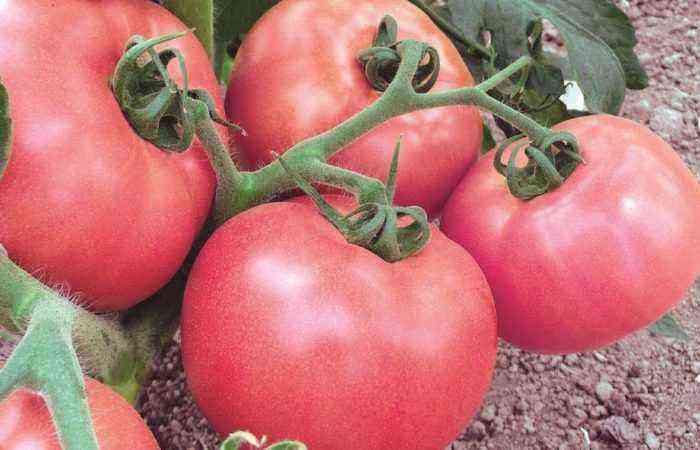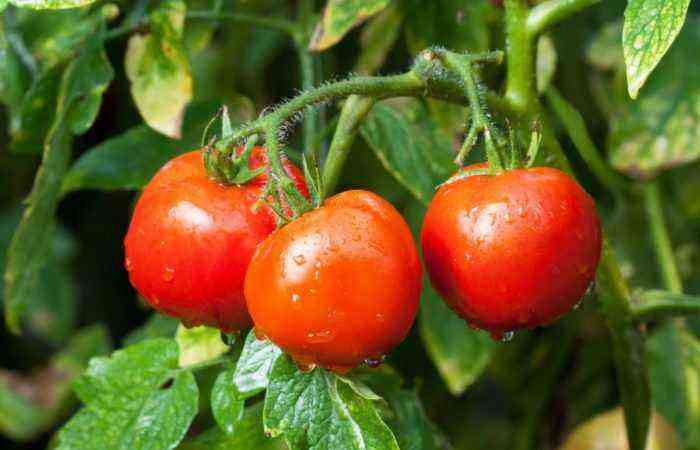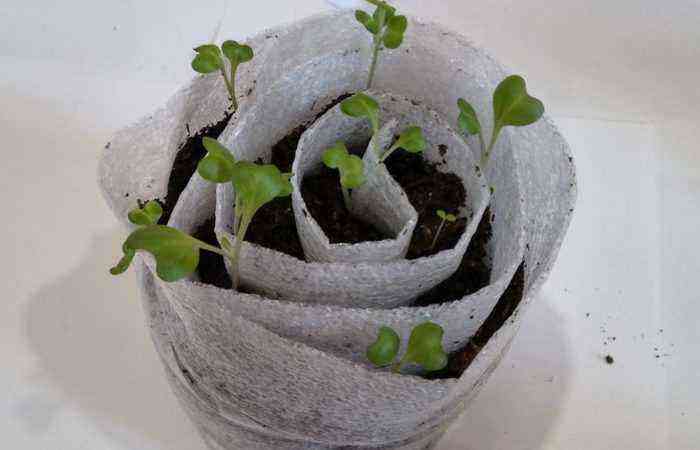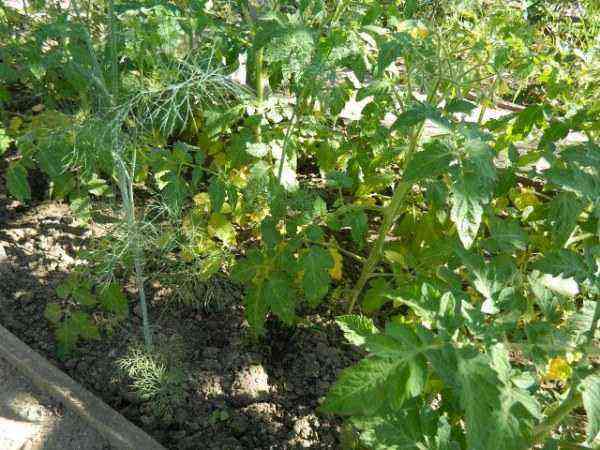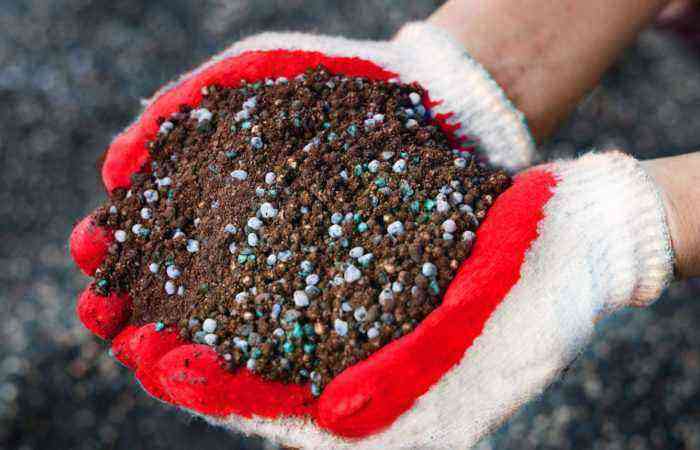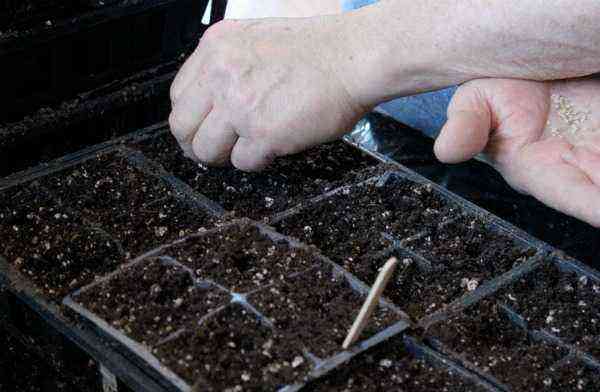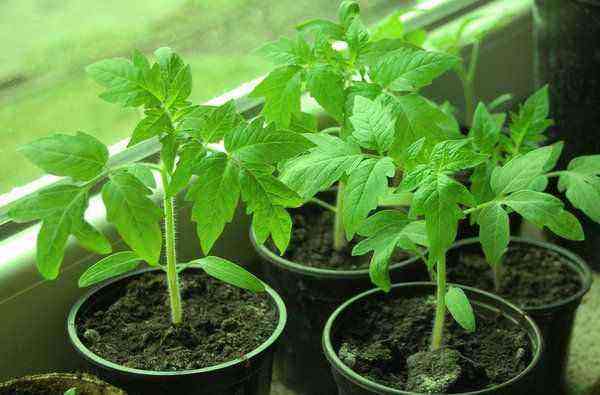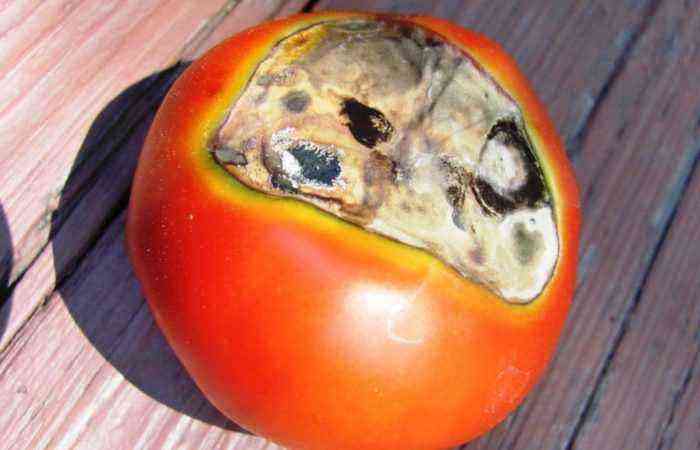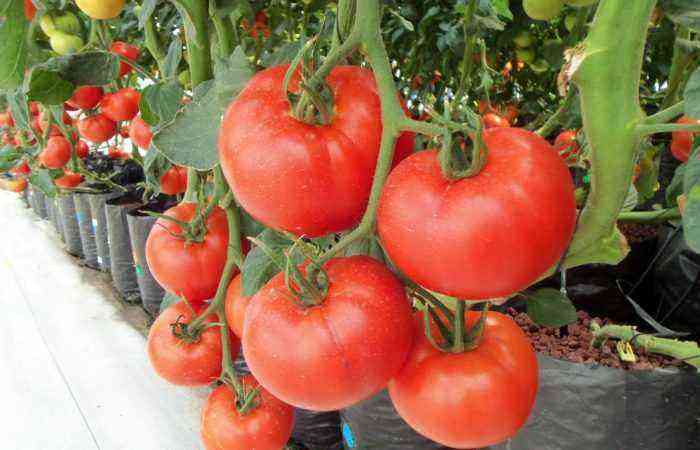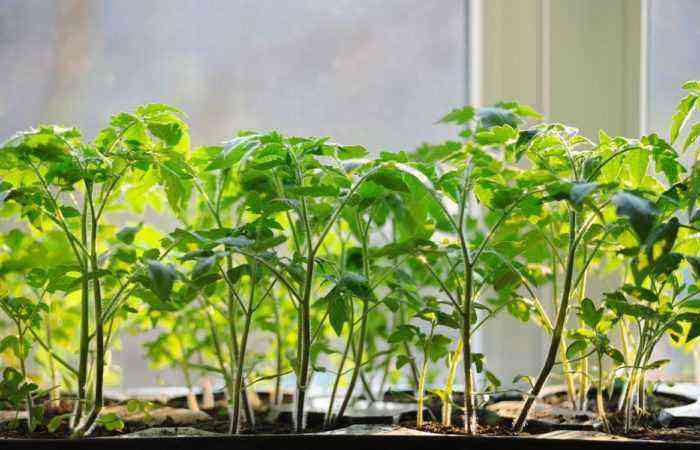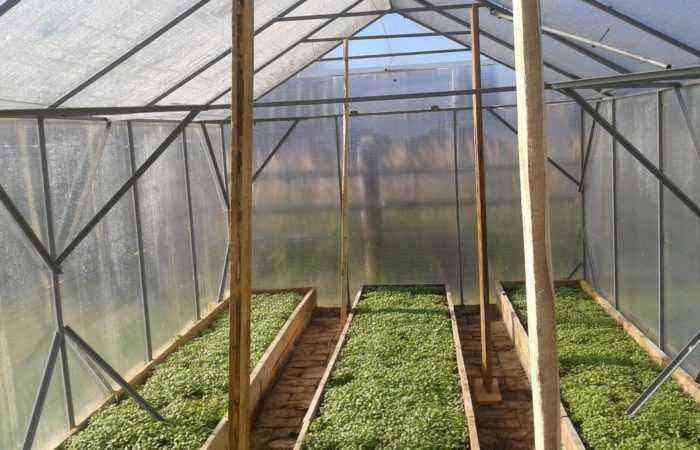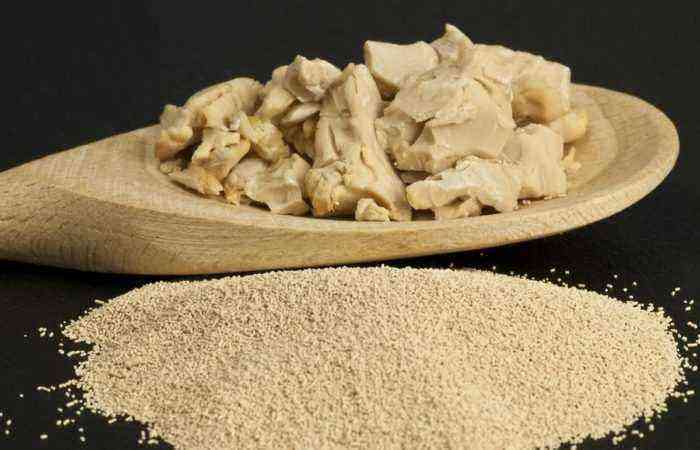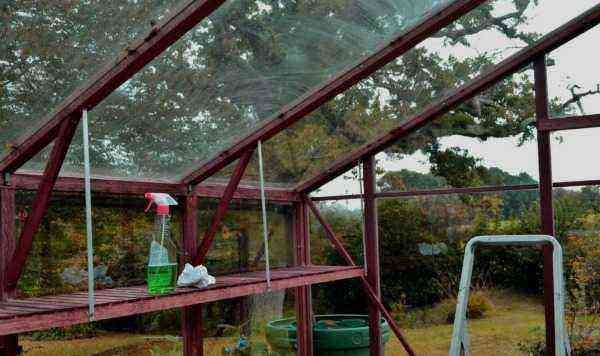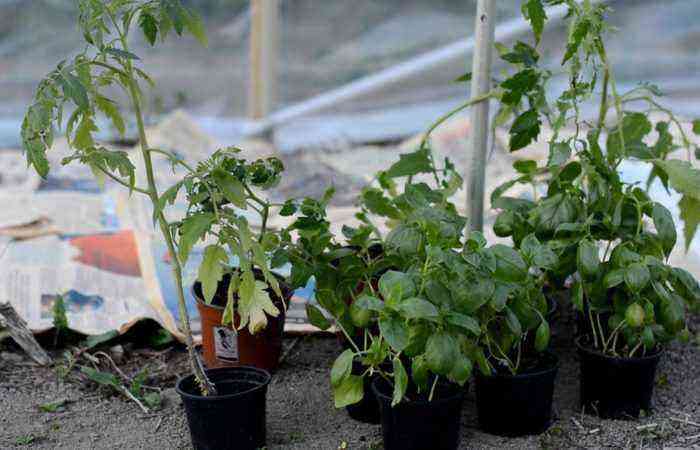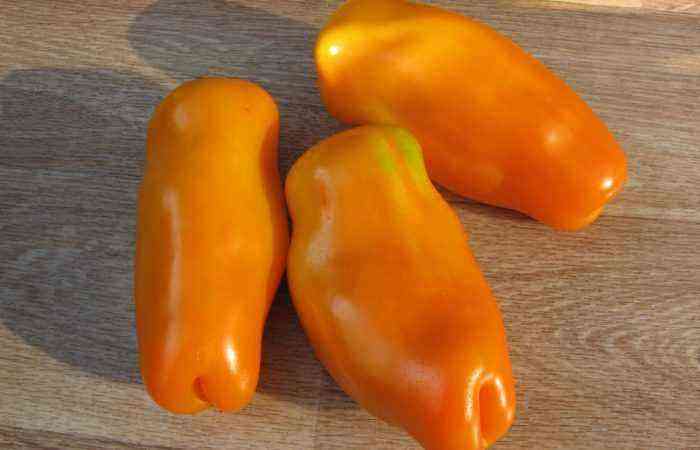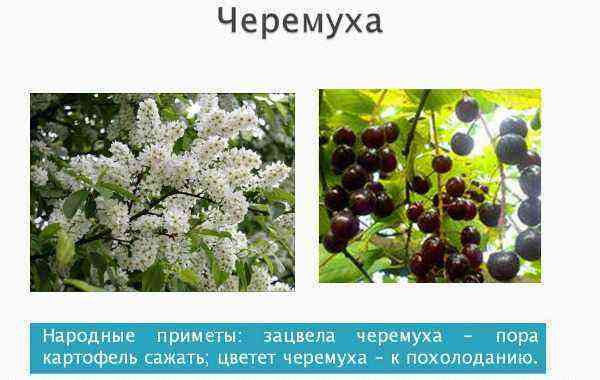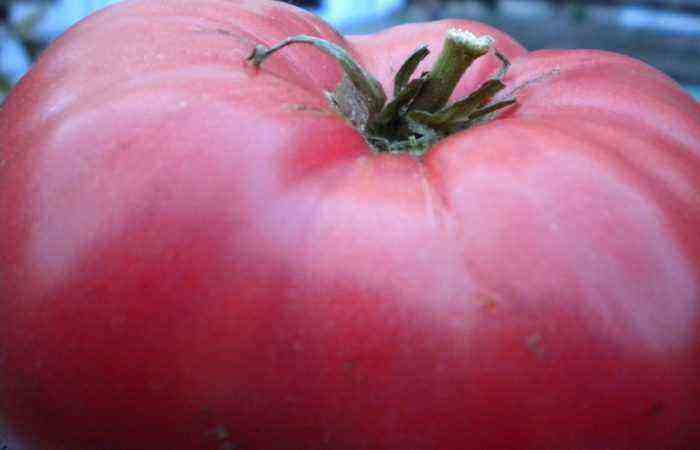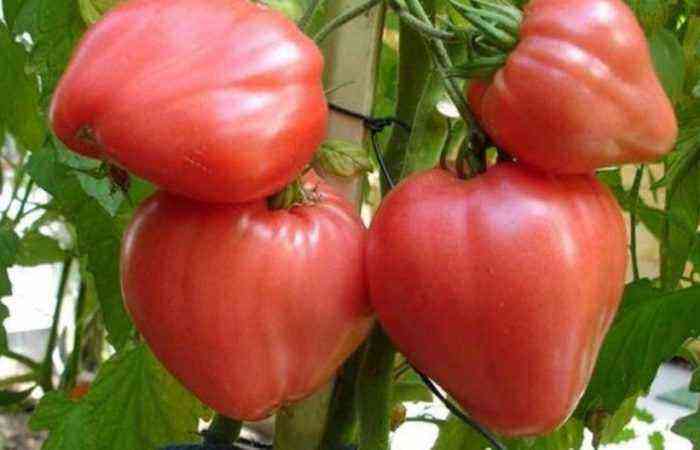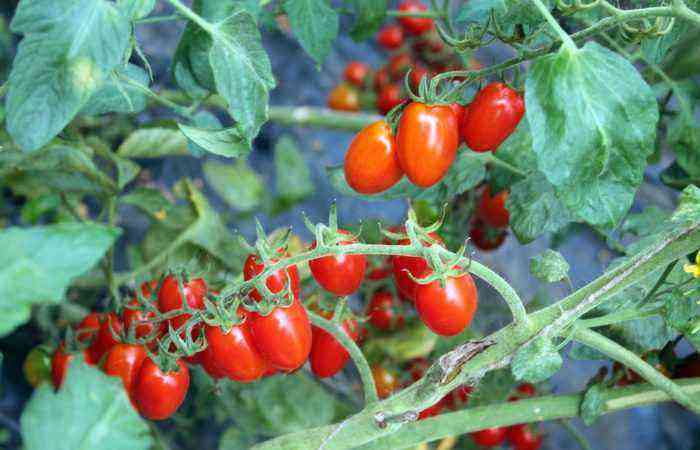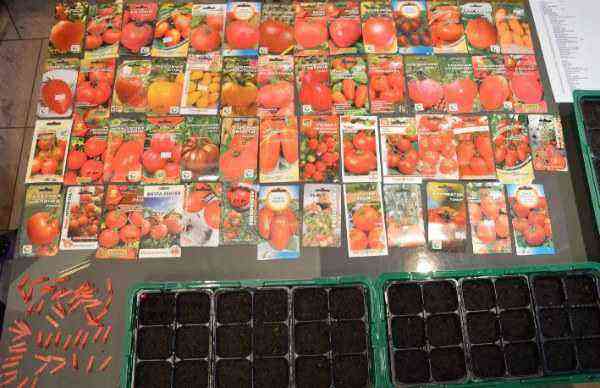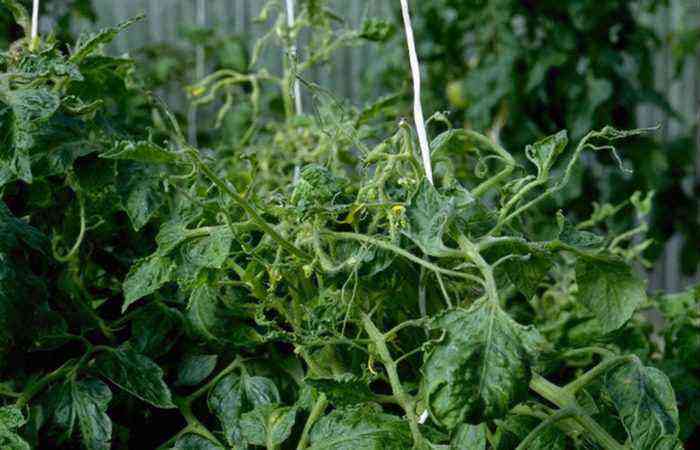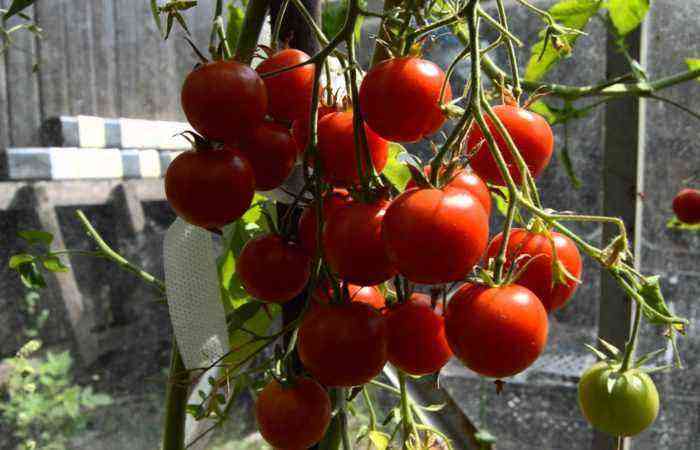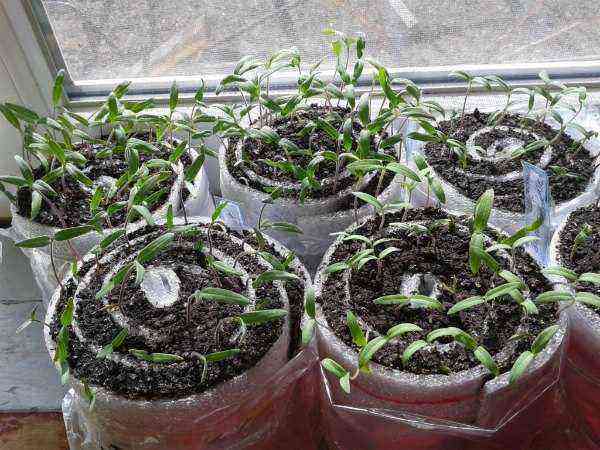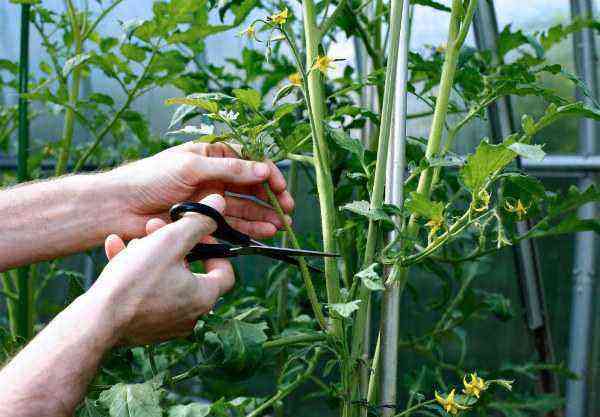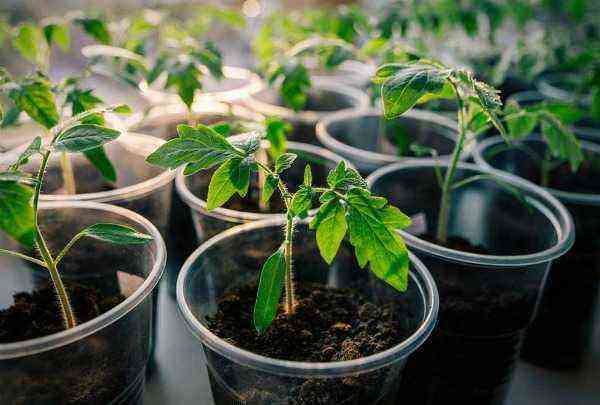Fusarium wilt of tomatoes is a fungal disease caused by the fungus Fusarium oxysporum (Schlecht.) f. sp. lycopersici (Sacc.), it has several forms and causes irreparable harm to the plant. The pathogen penetrates into the cells of the bark and the water supply system of the plant, germinates and disrupts water metabolism, which contributes first to wilting, and then to the death of the plant.
The complexity of Fusarium wilt as a disease lies in the fact that the disease lies inside the plant and damages the most important arteries that ensure vital activity. Severe damage can destroy the plant and crop. To prevent this situation, it is necessary to carry out preventive measures even before sowing seeds. Recognizing the first symptoms of the disease is an opportunity to defeat it without losing the crop.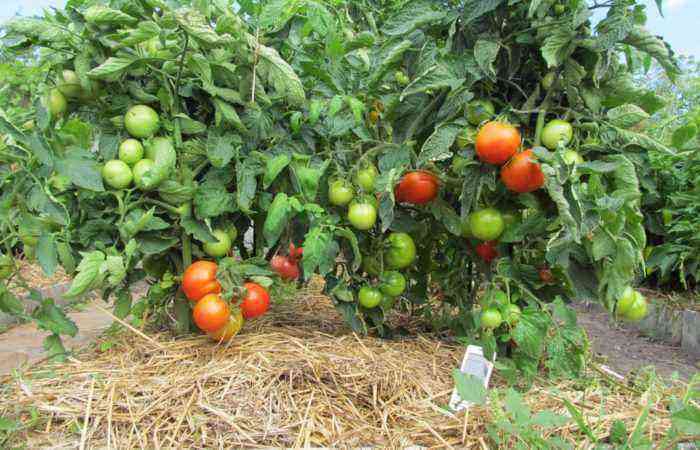
Signs of the appearance of Fusarium wilt of tomatoes
Although the disease has symptoms similar to other tomato diseases, careful observation of the state of the plant will help determine its characteristic features:
- change in color of leaf blades and veins from green to light green or yellowish;
- leaf petioles are deformed, and the leaves themselves are twisted;
- in wet weather, a white coating appears on the root system;
- the tops of the shoots wither and the leaves in the lower part quickly die off, and then the whole plant;
- on the cut, the vessels of the stem have a dark brown color, longitudinal white furrows appear.
- the core of the stem dies.
How it spreads
The causative agent of the disease penetrates from the soil through the damaged lateral roots of the plant, then germinates in the cells of the bark of the plant, captures the vessels of the plant from the leaves to the stem and fruits. The mycelium of the fungus paralyzes the water supply system of the tomato, which impairs the supply of nutrition to the tissues.
As a result, the spread of the disease begins from below, and the tops of the shoots begin to wither, since the affected vessels of the stem are not able to provide them with a sufficient amount of juice.
From the onset of infection to the identification of characteristic signs of Fusarium wilt, depending on the conditions, it can take from 7 days to one month.
Conditions for the development of the disease
Infection can occur through seeds, then the spores of the fungus germinate inside the tissues of a young plant, and during the period of fruiting, when the load on the plant increases, wilting begins. The same happens with infection through the roots.
The spores of the fungus are very resistant and viable over a wide range of temperatures, but the most comfortable temperature for germination is between 20 and 28°C. The alternation of rainy days with hot, at low night temperatures is what is needed for the rapid growth of mycelium along young shoots.
The causative agent progresses rapidly in conditions of high humidity, but even when the soil dries up, followed by abundant watering, changes in humidity and temperature, favorable conditions are created for the development of the disease. In areas with close groundwater, the risk of disease increases. Constant relative humidity of 60-70% weakens the activity of the pathogenic fungus.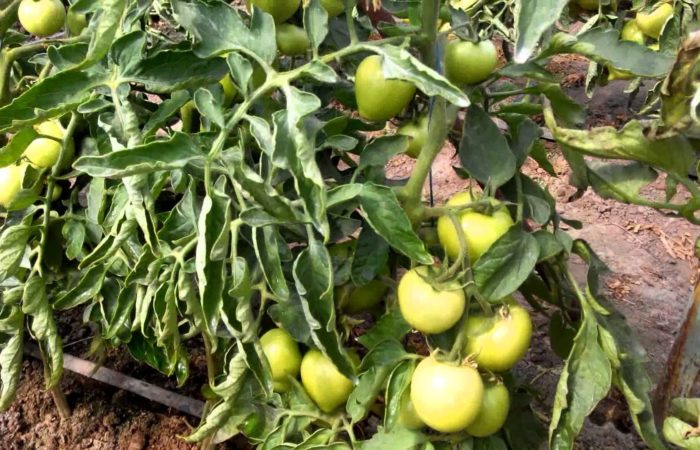
How to spray tomatoes from Fusarium wilt
The spores and mycelium of the Fusarium fungus cause great harm to tomato plants and are quite resistant to various drugs, so the selection of funds should be taken seriously.
Preparations for the treatment of fusarium
The drug is a microbiological agent that has a preventive, therapeutic and plant resistance-enhancing effect. It is used at different stages of development, as well as during pre-sowing tillage:
- The powder is scattered over the surface of pre-moistened soil and dug up or irrigate the soil with a solution of 1,5-2 tbsp. l. drug in 10 liters of water.
- Before planting, the roots of the seedlings are kept for 1-2 hours in a freshly prepared solution.
Spraying plants during the growing season with an interval of 7-14 days. It is better to carry out processing in cloudy weather or in the evening, as useful phytosporin mushrooms die under the influence of sunlight.
It is a biological contact fungicide that destroys pathogens of fungal and bacterial diseases. The drug is recommended for the treatment of seedlings after planting in the ground at the rate of 100 ml of a working solution prepared according to the instructions for 1 plant.
- Gliocladin or Trichodermin.
They contain spores and mycelium of the fungus Trichoderma lignorum, which destroy the fungus – the causative agent of Fusarium. Solutions of the drug treat the soil for growing seedlings, sterilized or steamed soils, as well as holes when planting seedlings in the ground. The working solution is prepared at the rate of 100 liters of the drug per 10 liters of water and used according to the manufacturer’s instructions.
The active substance of the drug is a spore-crystalline complex with insecticidal components (Bacillus thuringiensis), which block the germination of Fusarium spores and mycelium. Processing is carried out by fine-drop spraying with a sprayer in dry weather.
This is a product designed to improve the soil, stimulate the growth and development of plants, harmless to humans and animals. It contains beneficial soil bacteria that inhibit the development of not only Fusarium fungi, but also many other diseases.
Folk remedies
You can treat folk remedies like this:
For one liter of milk add 25 g of laundry soap and 35-40 drops of iodine. The composition is thoroughly stirred and sprayed with tomato plants before ripening.
Grind 200-300 g of garlic cloves and insist for a day in 10 liters of water. The antifungal properties of garlic will well complement 2-3 g of potassium permanganate. The solution is used for spraying plants and the soil under them.
Dry ash is used for tillage, scattering it over moist soil in the area of u3bu4bthe distribution of the root system. Ash can also be used in soil preparation. Plants are sprayed with a solution both before flowering and during the formation of the first ovaries. To prepare it, 10-2 liters of ash is poured into 3 liters of water, insisted for 25-30 days, then the light part is drained, and the infusion is diluted to 30-35 liters. To prevent the solution from running off, add XNUMX-XNUMX g of soap.
Mix with water in a ratio of 1: 1 and spray the plants and soil with a spray bottle. To enhance the effect, add a little iodine.
Features of processing tomatoes in a greenhouse and open ground
Indoors, at high temperature and humidity, favorable conditions are created for the germination of fungal spores and the growth of mycelium. It is necessary to strictly control the humidity and provide ventilation.
Prophylactic treatments are carried out with biological preparations at intervals of 7-14 days. When signs of the disease appear, chemical preparations are used.
A special place in prevention is occupied by soil disinfection, the introduction of dolomite flour, the moderate use of nitrogen fertilizers and preventive spraying of plants.
Tillage after infected tomatoes
Due to the fact that tomatoes are often grown in the same place, especially in greenhouses and greenhouses, disease prevention is especially important. Disinfection must be carried out twice:
- Structures, equipment, surfaces and plant residues are treated with a solution of copper oxychloride immediately after harvesting the fruits and kept for 20-24 hours.
- After removing plant residues, it is recommended to remove 1-2 cm of soil. If this is not possible, comprehensive disinfection measures are carried out. The structures are treated with Bordeaux liquid or blue vitriol, the greenhouse is fumigated with sulfur, and the soil is dug up and treated with a fungicide.
In open ground, after harvesting plant residues, the soil is worked out with one of the fungicides and the soil is immediately dug up so that the spores do not spread. For recovery, green manure is sown, which is subsequently plowed into the ground.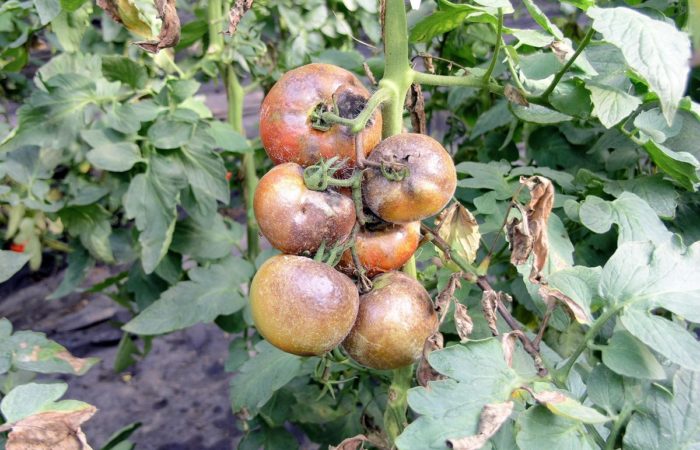
Recommended varieties
There are no varieties that never undergo Fusarium wilt. But quite resistant varieties are available:
Indeterminate, early maturing variety with a strong greenhouse root system.
Mid-season, indeterminate, high-yielding variety for protected ground, well established in extended culture.
Hybrid, indeterminate, compact variety with a strong root system for growing on any substrate in any type of greenhouse.
Mid-late, determinant, hybrid salad variety for cultivation in open ground and film structures.
The variety is semi-determinant, early, large-fruited, recommended for film greenhouses.
Hybrid, early ripe, large-fruited salad variety for greenhouses and open ground.
Prevention
The causative agent of Fusarium, affecting the internal organs of the plant, becomes difficult to treat, so it is necessary to carry out preventive measures in combination to prevent infection.
seed Processing
Seed dressing is the most important preventive measure to prevent the development of fungal diseases. It is carried out two weeks before sowing seeds.
For seed treatment use:
- potassium permanganate solution (1%). Withstand 30 minutes in a warm solution (50-60 ° C), rinse in warm water and dry.
- solutions of fungicides Benazol or Fundozol in accordance with the manufacturer’s instructions. These are chemical, rather aggressive preparations, and they should be used only if the seeds were collected from plants with signs of the disease.
Agrotechnical events
- cleaning and destruction of all plant residues;
- disinfection of soil, all elements of greenhouses and inventory;
- pre-sowing treatment of seeds with disinfectants;
- deep autumn and spring digging of the soil;
- prevent damage and erosion of the roots and carry out hilling seedlings in a timely manner;
- disinfection of hands and tools during pinching;
- observance of crop rotation and the choice of predecessors.
Timely implementation of preventive measures and proper agricultural technology will save plants from insidious diseases and get a high-quality crop of tomatoes.
